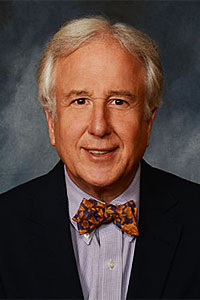
The world can only wonder whether President-elect Donald Trump will fulfil his campaign promise to impose a 45% tariff on Chinese-made goods bought in the US.
What's already clear, though, is that investors inside the No.2 economy, unlike their American counterparts, are undaunted. Even after Mr Trump's upset victory last month, their appetite for the country's favourite companies is growing, as long as they can trade shares of them in US dollars. That's a big bet that the financial glue sealing a decades-old symbiotic relationship isn't dissolving just yet.
No nation does as much business with the US as China, accounting for almost 17% of total American trade, according to data compiled by Bloomberg.
The stock market benefiting most from this booming commerce is the Guangzhou-based E Fund Hang Seng China Enterprises Index, one of 265 global exchange-traded funds focused on China and holding the shares of 40 major companies also trading in Hong Kong dollars, which track US dollars.
For Chinese investors, the E Fund HSCEI ETF is the closest thing to owning American currency. They poured $549 million into the fund this year, or 67% of its total assets, the most of any Sino ETF. Their investment is paying off with a return of 10%, rivalling the performance of the Standard & Poor's 500 Index.
As China's economic growth rate slowed from 10.6% in 2010 to 6.7% this year, money flowed out of the country. The renminbi depreciated 6% to an eight-year low through 11 months of 2016. That helps explain the Chinese preference for publicly traded equity in dollars amid forecasts that the renminbi will weaken almost another 3% in 2017.
Mr Trump's election on Nov 8 accelerated the trend. A day later, the flow of money into the E Fund HSCEI ETF was the most since June 24, when Mr Trump toured his Turnberry golf course in Scotland and celebrated the British vote to leave the European Union as "a great thing". Brexit caused the pound to plummet as much as 19% by the middle of October while the euro lost almost 5% of its value between May and late July. Such volatility increased demand for dollars as a refuge for investors.
Across the Pacific, American investors are showing nothing but disdain for Chinese shares. Slowing growth, a relatively opaque economy and Mr Trump's threat to declare China a currency manipulator helped make the San Francisco-based iShares China Large-Cap ETF, which holds 50 companies also traded in Hong Kong dollars, the least popular among the 265 China-focused ETFs. So far this year, more than $1.7 billion, or 32% of its total assets, have fled the fund. On Nov 9, the same day the Chinese rushed into the Guangzou ETF, the iShares China suffered its biggest withdrawal since June 13.
Where Americans see peril, Chinese see opportunity in the nation's bellwether companies. Consumer staples, the best-performing industry with a yuan-based total return (income plus appreciation) of 15% this year, remain the favourite measured in dollars.
They returned 8% compared to a 0.03% gain for the MSCI World/Consumer Staples Index. These Chinese companies are a bargain because investors still are paying a 10% discount on a price to earnings basis in 2016 compared to their global peers. During the past five years ending in 2015, the same companies sold at an average premium of 20%, Bloomberg data show.
The outlook brightens for the 20 Chinese firms that make up the consumer staples industry amid forecasts for world-beating average revenue growth of 3.3% in 2016 and 13.3% next year. The 123 companies in the MSCI World Staples Index, by comparison, will see sales increases of 2.2% this year and 5.1% in 2017, according to Bloomberg data.
Energy companies, which returned 0.4% as China's top-performing industry this year, have a similar relative value. Since June 2014, when the price of oil declined 50%, China energy firms and their global competitors became less profitable, measured by their Ebitda margin, or how much a company can turn revenue into earnings before interest, taxes, depreciation and amortization expenses.
Chinese profitability held at 13% while the rest of the world's Ebitda margin declined to less than 7%. When measured on a price-to-cash flow basis, an indicator of value commonly used by the energy industry, Chinese firms are trading at a 45% discount to their peers -- meaning they're likely to go up reasonably soon.
To be sure, many analysts say Chinese energy is owned by the government and therefore more resistant to oil's falling value and less likely to profit when the oil price increases. But energy companies outside China already are expensive based on their cash flow ratios, so China remains cheap by comparison.
Chinese investors can rest assured that even during the country's slowdown, China's growth will remain at the top of the Group of 20 nations this year and will be No.2 during the next two years, according to data compiled by Bloomberg. The estimated 6.7% gross domestic product growth in 2016 is about $730 billion, or equivalent to the Netherlands' economy. If China grows 6.4% in 2017, the average of forecasts compiled by Bloomberg, it will be $670 billion larger next year, an amount greater than the economy of Switzerland.
For all the anxiety outside China about what a President Trump may do during the next four years to alter the relationship between the No.1 and No.2 economies, there is the confidence inside China that comes with a 5,000-year-old civilisation. ©2016 Bloomberg View
Matthew A Winkler is a Bloomberg View columnist. He is the editor-in-chief emeritus of Bloomberg News.
